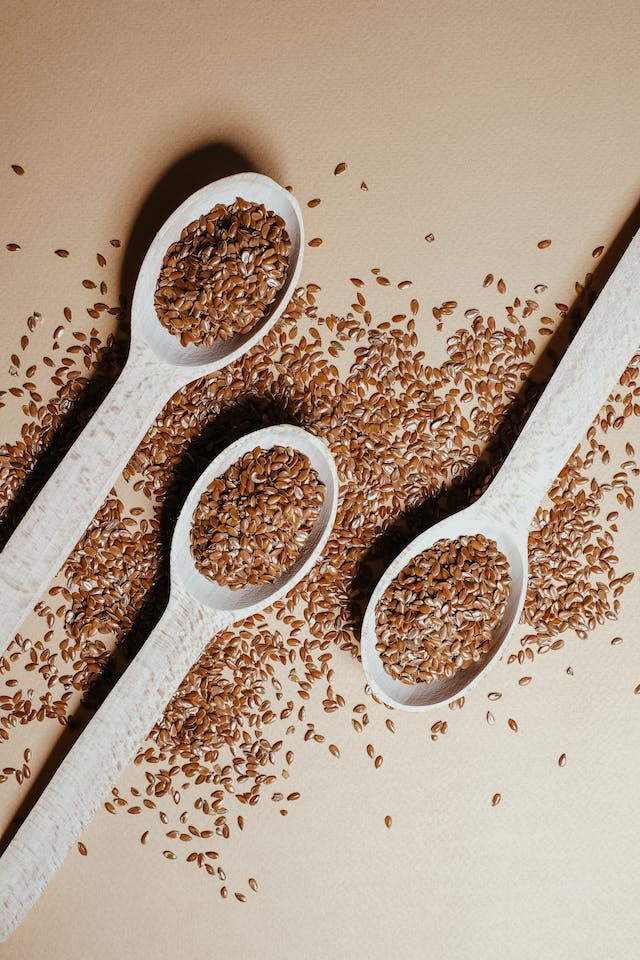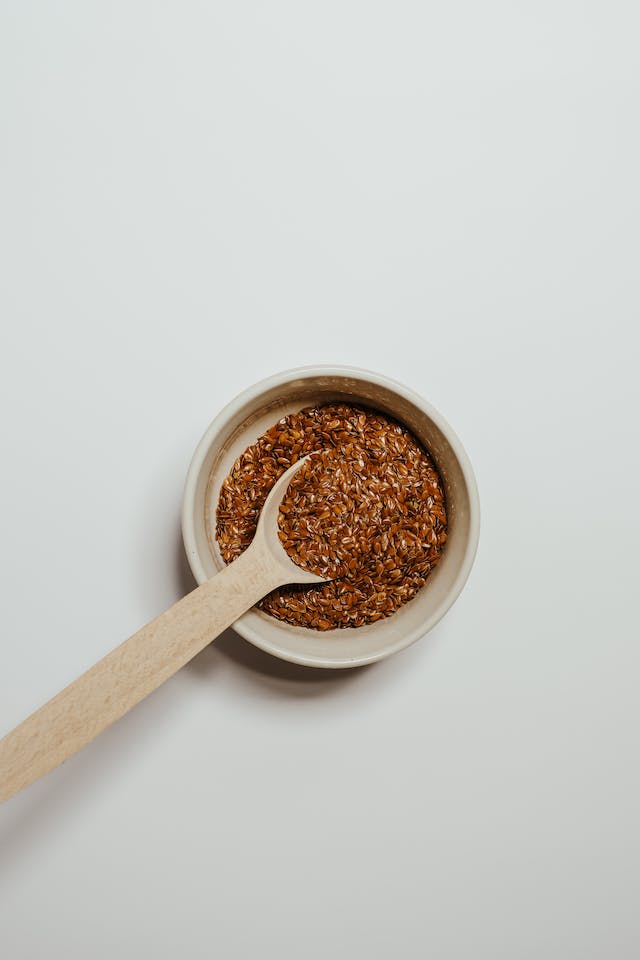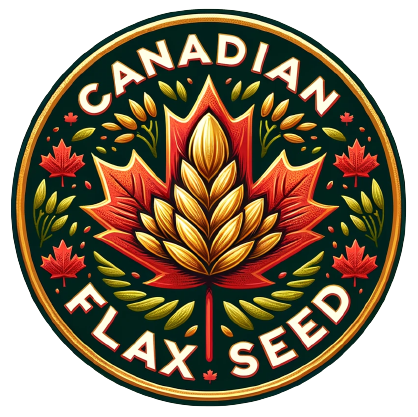Canadian Golden Flax Seed
Exploring the Origin and History of Golden Flax from Canada
The golden grains of Linum usitatissimum, more commonly known as flax or the Golden Flax Seed, have been gracing our planet with their presence and utility for millennia. Not just a pretty face, this crop serves dual purposes – providing sustenance through its nutritional bounty and giving birth to the textile we know as linen. The Canadian variant of this antiquated plant species has recently found itself in the limelight owing to its superior quality.
Believed to have sprung from the heart of the Mediterranean region before embarking on a journey across continents, it finally discovered its utopia in Canada’s embrace. Here it encountered an environment that seemed tailor-made for its needs – fertile soil perfect for burrowing roots deep into Mother Earth’s bosom; long daylight hours basking plants in warm sunlight; cooler temperatures offering respite at nightfall.
It was during the 19th century that large-scale cultivation took root in western Canada’s flat expanses, fondly referred to as Prairie Provinces. These plains proved themselves worthy hosts for cultivating Canadian Golden Flax Seeds by fostering conditions conducive to yielding high-quality seeds teeming with beneficial nutrients.
Over successive generations, farmers honed their understanding and skills associated with cultivating Golden Flax Seed – each epoch adding another layer of wisdom on top of those preceding it. This mastery resulted in a product recognized globally not only for its quality but also how it encapsulates pivotal moments from history while contributing substantially towards Canada’s economy.

Understanding the Nutritional Profile of Golden Flax
Enshrouded in the mystique of its golden hue and dense nutrient profile, linseed – or as it’s more commonly known, golden flax – is a superfood par excellence. It holds an esteemed position in numerous healthy diets out there, with the Mediterranean diet being one key proponent. This wholesome ingredient boasts a cornucopia of Omega-3 fatty acids; alpha-linolenic acid (ALA) takes center stage due to its impressive anti-inflammatory prowess.
In addition to this, the emollient seeds offer copious amounts of dietary fiber – soluble and insoluble alike. This aids digestion while also playing a pivotal role in maintaining steady blood glucose levels – indeed an attribute worth noting.
Golden flax goes beyond just these nutrients though; it stands apart for its high content of lignans – plant compounds imbued with antioxidant properties and estrogenic effects that may serve as protective shields against certain hormone-related cancers.
Consuming these lustrous seeds brings forth a deluge of essential minerals and vitamins into your daily intake: think vitamin E, magnesium, phosphorus, potassium, not forgetting B vitamins. Regardless if you choose to savor them raw or ground into fine particles or even consumed as oil form—golden flax presents a brilliant medley of health-relevant nutrients necessary for optimal health.
Highlighting the Health Benefits of Consuming Golden Flax
Golden flax, whether consumed in its purest form or as a component of variegated health-centric foods, is a powerhouse brimming with an array of health-enhancing benefits. The primary essence of golden flax lies in its abundant richness of omega-3 fatty acids, more specifically alpha-linolenic acid (ALA). This cardio-beneficial acid plays a pivotal role in mitigating inflammation, augmenting cardiac well-being and potentially curtailing the risk associated with chronic ailments like cancer and arthritis.
Another remarkable virtue imbued within golden flax is its striking content of fiber. Grounded golden flax emerges as an exceptional reservoir for both soluble and insoluble fibers. Soluble fiber acts as a catalyst in regulating blood sugar levels while simultaneously decreasing unhealthy cholesterol levels; on the other hand, insoluble fiber introduces substantial bulk to the diet which stimulates regular bowel movements hence ensuring optimal digestive wellness. Regular ingestion of this superfood -golden flax may also support weight regulation due to the combined impact from high fiber content and protein profile.
Incorporating Golden Flax into your Everyday Diet
Imbued with a profusion of health-enhancing properties and an impressive nutritional profile, Golden Flax, hailing from the vast landscapes of Canada, lends itself effortlessly to be woven into the fabric of your everyday culinary endeavors. This powerhouse superfood possesses a chameleon-like versatility that allows it to merge harmoniously with an array of meal types.
With its subtle flavor profile refraining from dominating other ingredients in the ensemble, this is a superfood that easily finds its place within various gastronomic creations – whether they lean towards savory stir-fries or veer off towards sweet dessertscapes or even lie nestled within nutrient-packed smoothies. Its presence not only elevates nutritional value but also infuses textural variety by imparting a delicate crunch to otherwise softer dishes.
A common practice for integrating this golden-hued flax into one’s dietary journey often takes place at breakfast tables. A gentle dusting over morning staples like oatmeal, cereal bowls or yogurt can set your day on course brimming with Omega-3 fatty acids, plant-based proteins and rich dietary fiber content. As lunchtime rolls around followed closely by dinner hour, introducing Golden Flax into salads’ vibrant medley or soups’ warm comfort and even stir-fry’s flavorful dance adds another layer of nutritional enhancement.
Bakers too find delight in incorporating these tiny seeds into their baked symphonies – breads humming wholesome tunes; muffins exuding healthier vibes; cookies subtly boasting about their improved nutrition scores – all while adding interesting texture notes.
From Canadian kitchens to worldwide dining rooms, the effortless fusion of Golden Flax into daily meals is nurturing a burgeoning trend directed towards embracing healthier food habits.
A Look at the Farming Practices for Golden Flax in Canada
The cultivation of Golden Flax, or linseed as it’s also known, is a task held in high esteem within the agricultural landscape of Canada. Initial steps involve the meticulous selection of land that is not only flat but offers efficient drainage capabilities. The reason being that flax plants have relatively shallow roots and don’t thrive in water-saturated conditions.
As winter’s chill recedes and spring breathes warmth into Canada’s soil, lifting temperatures to approximately 10-12 degrees Celsius, farmers commence sowing golden flax seeds. What distinguishes these growers from others around the globe is their dependence on natural conditions rather than relying heavily on synthetic inputs like fertilizers.
The passage of time over 30 to 40 days paints an exquisite portrait – fields awash with gold as flax plants enter their blooming stage. It’s important to note each bloom has a lifespan limited to one day; however, individual plant blooms at its own rhythm ensuring continuous waves of golden hues across the field.
Between 110 and 140 days post planting, crops reach maturity and harvesting commences. Owing much to Canadian farming practices which prioritize quality cultivation over mass production, Canada proudly stands amongst the largest global producers of this invaluable crop. Thousands upon thousands of hectares are committed annually towards cultivating this highly treasured resource: Golden Flax.

The Process of Harvesting and Processing Golden Flax
As the golden flax plant embarks on its ripening journey, it manifests a resplendent golden-brown hue – an indication that the oil content has reached its pinnacle. This initiates an intricate process of harvesting, carried out by a highly specialized machine known as a combine. The function of this mechanical marvel extends beyond mere harvesting; it also serves to thresh the precious flaxseed from the stem.
The subsequent transformation of these golden seeds into consumable goods commences with rigorous cleaning; every trace of impurity, be it foreign elements like rogue weed seeds or chaff, are scrupulously eradicated. Following this purification phase is deseeding: powerful blowers spring into action to expel any light seeds, dockage and damaged ones with unwavering precision.
Next comes grading – assigning categories based on weight, size and color; each seed meticulously measured and sorted in order for consumers to receive only premium quality golden flax. These critical stages in processing highlight our commitment towards ensuring nothing but superior-grade products reach your table.
A Comparison Between Canadian Golden Flax and Other Varieties
Cloaked in its signature golden hue, boasting a formidable nutritional arsenal, the Canadian Golden Flax has carved out a niche for itself within the international flax bazaar. The chilly embrace of Canada’s northern climate bequeaths upon its golden flax an exclusive hearty flavor and an added crunch that has won over taste buds around the globe. On the other hand, taking their own stand in this diverse market are such stalwarts as New Zealand’s Brown flax and Argentina’s Yellow flax with intriguing promises concerning taste and health benefits.
The New Zealand Brown flax, for instance, carries a more nut-infused flavor persona and is often applauded for its generous lignan bounty. Contrarily standing tall is Argentinian Yellow flax which vaunts its high oil content giving it a gentler texture coupled with a marginally understated flavor profile. However disparate they may be in terms of taste notes or nutritive worthiness; these variants share common ground when it comes to boosting overall health – earning them unanimous thumbs up from global connoisseurs of flax.
How to Properly Store and Maintain the Freshness of Golden Flax
The journey of safeguarding Golden Flax’s integrity, from procurement to consumption, is a dance with freshness, quality and the preservation of its health-giving attributes. One must cradle this golden gem in an impermeable vessel, tucked away in the cool shadowy corners of your kitchen or pantry. This storage ritual offers sanctuary against invasive moisture and light – enemies that hasten flax seed decay. The container should never be left unattended or allowed to flirt with heat or sunlight.
For those seeking a long-lasting liaison with their Golden Flax seeds—be they whole or ground—the embrace of refrigeration is nonpareil. When housed within icy chambers, whole flax seeds can defy time for up to a year while their ground counterparts maintain their vibrancy for numerous months. Yet one must tread lightly here; once the flax submits to grinding it becomes vulnerable to oxidation and rapid spoilage making instant cooling paramount for preserving its vitality. Remember always: cooler conditions rein in oxidation thus prolonging this wholesome grain’s existence.
Delicious and Nutritious Recipes Using Golden Flax
The myriad of ways to incorporate golden flax into your culinary repertoire is as vast as the nutritional density it carries. Its versatility shines through in countless recipes, adding a healthful twist and an enriching punch – be it smoothies or baked delights. Whether you choose to grind it into flour or flax meal, sprinkle whole seeds onto your morning cereal, or drizzle its oil over your salad dressing; golden flax offers limitless possibilities for integration.
Interestingly enough, this nutrient-dense ingredient can even take on the role of a vegan egg substitute — providing just the right balance between moisture and consistency while simultaneously amplifying the dish’s nutritional complexity.
A recipe that beautifully extols the unique nutty flavor of golden flax is none other than banana-flavored muffins studded with flaxseeds. These easy-to-make muffins employ basic ingredients and are brimming with nutrients – truly celebrating nature’s bounty. Likewise, pancakes graced with flaxseeds along with a topping of fresh fruits and honey introduce an exciting spin to traditional breakfast fare.
For those who are gastronomically adventurous, blending a spoonful of flaxseed into their green smoothie not only provides them with valuable omega-3 fatty acids but does so without compromising the drink’s refreshing taste. Engaging in daily dietary interactions with golden flax could well be considered both a healthy decision and flavorful exploration – opening up entirely new panoramas in culinary adventure.
Exploring Potential Side Effects and Precautions for Golden Flax Consumption
Golden flax, with its divine halo of health benefits, does cast a shadow of caution that individuals must heed. The seed pods may indeed be overflowing with nutritional value, but for some unsuspecting souls, they could also trigger allergic reactions manifesting as breathing difficulties or skin afflictions like rashes and itching after consumption. Moreover, the generous dose of dietary fiber in flax can become a double-edged sword if not handled wisely – an overindulgence can result in digestive discomforts such as bloating and gas or even constipation unless balanced impeccably with ample water intake.
An oft-forgotten caveat pertains to the consumption of raw or unripe flaxseeds – seemingly innocuous yet harboring potential peril. They possess toxic compounds called cyanogenic glycosides which when consumed copiously can metamorphose into deadly cyanide within the body leading to possible cyanide poisoning. Therefore, it is strongly suggested that these little seeds should always be relished only after roasting or cooking them to neutralize the harmful toxins; never should they be ingested in their raw or unripe state.
The genesis of Golden Flax from the land of Canada – could you shed some light?
Born in 1932, the Flax Council of Canada gave birth to golden flax. Prairies of Canada serve as its cradle, an environment viewed as ideal for nurturing flax due to favorable climate conditions.
Nutritional composition contained within Golden Flax – care to elaborate?
Richness is found within golden flax – dietary fiber, omega-3 fatty acids and lignans are aplenty. Alongside this, a range of vitamins and minerals such as B1 and magnesium make their presence known.
Health advantages potentially unlocked through consumption of Golden Flax – what might they be?
Imbibing golden flax may act as a key towards improved digestive health, heart disease risk reduction and blood sugar level control. It also holds potential in cancer prevention measures and cholesterol improvement strategies.
Daily diet integration with Golden Flax – how might one proceed?
A multitude of paths are available for incorporating golden flax into your daily intake regime; perhaps consider it an enhancement to morning cereals or smoothies? Alternatively use it as a garnishing sprinkle on salads & yogurts or even bake it into breads & muffins!

Farming methodologies employed for Canadian Golden Flaxis cultivation– could you explain further?
The prairielands play host once again when talking about cultivating Canadian Goldern Falx . Harvested during autumnal times ,the seeds are then separated from their mother plant , undergo cleansing rituals before being subjected drying process prior packaging them up ready for consumption .
Differentiating factors that set apart Canadian Goldern falx from other varieties ?
The mark left by Canadain goldern falxis indeed unique . Known far wide not only because high quality nutritional profile but also mildly flavoured oil rich texture topped off with a golden hue that gives it its name .
Preserving the freshness of Golden flax – any recommendations?
One must ensure to store the golden flax within cool, dry confines in a sealed container. Refrigerating or freezing can extend its shelf life even further.
Any recipe suggestions utilizing Golden Flax as an ingredient?
Certainly! Unleash your culinary creativity with recipes like Flaxseed muffins and smoothies, or use it as a crunchy topping on salads and yogurts.
Pertaining to side effects or precautions regarding Golden Flaxies consumption – what should one be aware of?
Though generally safe for ingestion, some individuals may experience bloating, gas accumulation and diarrhea. Abundant water intake is recommended due to its high fiber content. Those with specific health conditions such as inflammatory bowel disease or those on blood-thinning medications should seek professional medical advice prior adding flax into their diet.
